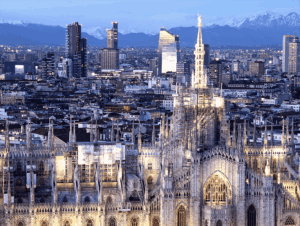As capital flows reshape Manhattan and emerging neighborhoods, sophisticated investors find compelling opportunities in a market defined by clear value corridors and accelerating premiums
The New York real estate market’s recent evolution presents a fascinating study in value creation. While headlines focus on rising prices, a deeper analysis reveals strategic opportunities for international investors who understand the underlying dynamics driving neighborhood transformation and price differentiation.
The current market structure offers unprecedented clarity for capital deployment. In Manhattan, where sixty percent of transactions now close without financing, we’re witnessing the emergence of a more efficient, institutionally-driven market that rewards prepared buyers. This shift toward liquidity-based transactions has created predictable value patterns that sophisticated investors can leverage.
Consider the remarkable transformations occurring across the city’s geography. Two Bridges has seen values increase nearly four-fold over the past decade, driven by thoughtful luxury development that has elevated the entire district. Long Island City has added over 7,000 units since 2020, establishing itself as a premier residential destination with direct Manhattan access. These aren’t isolated phenomena—they represent a systematic upgrading of New York’s residential infrastructure that creates compelling entry points for international capital.
The data reveals particularly interesting opportunities in climate-resilient coastal areas. Neighborhoods like Breezy Point and Red Hook, which have received substantial public investment in flood mitigation and infrastructure improvements, have seen values surge by 150 to 192 percent. For investors familiar with waterfront development in cities like Miami or coastal Italy, these areas offer familiar dynamics with the added benefit of government-backed resilience improvements.
From an international perspective, New York’s market fundamentals remain extraordinarily attractive. The city is home to nearly 400,000 millionaires—one in every twenty-four residents—creating sustained demand for premium properties. This wealth concentration, far from being a limiting factor, has generated a multiplier effect that benefits adjacent neighborhoods and creates clear appreciation pathways.
The emergence of distinct pricing tiers between cash and financed transactions—a $215,000 differential in Manhattan—actually provides sophisticated buyers with negotiating advantages. Properties that might stretch mortgage-dependent buyers become accessible to cash buyers, particularly international investors who often prefer all-cash transactions for speed and simplicity. The ability to close quickly and then refinance through delayed financing offers optimal capital efficiency.
Property tax increases, while substantial in gentrifying areas like Gowanus where they’ve risen from $800 to $6,500 annually, signal neighborhood maturation rather than deterrence. For investors accustomed to European property tax structures, these figures remain manageable while indicating strong appreciation potential. The tax increases follow, rather than lead, value creation—a sequence that rewards early positioning.
The concentration of development in luxury segments responds to genuine market demand rather than speculative excess. With New York’s population of high earners expanding significantly—households earning above $100,000 have increased by nearly half a million between 2021 and 2023—the premium segment offers sustained absorption capacity. This demographic shift mirrors patterns we’ve observed in Milan’s prime districts, where international wealth concentration has driven consistent appreciation.
Particularly compelling are neighborhoods experiencing what might be termed “institutional upgrade cycles.” Areas like Greenpoint, where rents have increased fifty percent since 2020, represent the middle innings of transformation rather than the conclusion. The neighborhood’s proximity to Manhattan, improving infrastructure, and growing cultural amenities suggest continued appreciation potential aligned with broader urban development patterns.
The political landscape, including potential rent stabilization measures, actually provides clarity for investment strategy. While stabilized properties may see limited rent growth, market-rate properties become increasingly valuable as supply constraints intensify. This dynamic, familiar to investors in European cities with strong tenant protections, creates predictable premium appreciation for unrestricted assets.
Governor Hochul’s recent legislation imposing waiting periods on institutional investors with large portfolios doesn’t affect individual international buyers or smaller investment entities. This regulatory framework actually advantages sophisticated individual investors and family offices—core constituencies for cross-border real estate investment—by reducing competition from large-scale institutional buyers.
The current moment offers particular advantages for international investors bringing foreign capital to New York. The ability to execute all-cash transactions provides immediate competitive advantages in securing premium properties. Moreover, the option to subsequently leverage these assets through the sophisticated U.S. mortgage market offers attractive capital optimization strategies unavailable in many international markets.
Looking forward, New York’s trajectory appears increasingly aligned with global gateway cities like London, Paris, and Hong Kong, where international capital plays a defining role in shaping premium real estate markets. The city’s unique position as both a global financial center and cultural capital ensures continued demand from international buyers seeking portfolio diversification and capital preservation.
For investors evaluating entry strategies, the current market offers clear signals. Neighborhoods undergoing infrastructure investment, areas adjacent to completed luxury developments, and districts with improving transportation links present compelling opportunities. The pattern is consistent: public and private investment creates value appreciation that rewards patient capital.
The bifurcation between cash and financed transactions, rather than representing market dysfunction, actually provides sophisticated investors with enhanced price discovery and negotiation leverage. In competitive situations, the ability to close quickly with cash, then optimize capital structure post-acquisition, represents a significant strategic advantage.
Exchange rate considerations further enhance the opportunity set for international investors. European buyers, in particular, may find current valuations attractive when considered against currency movements and relative pricing in comparable European markets.
The expansion of luxury inventory, particularly in emerging neighborhoods, provides diverse options for different investment strategies. Whether seeking immediate rental income from premium properties in established neighborhoods or capital appreciation through emerging district development, the market offers multiple pathways to value creation.
New York’s evolution toward a more institutionally-driven, globally-connected market aligns perfectly with international investment strategies. The clarity of value drivers, predictability of appreciation patterns, and depth of demand from an expanding high-income population create an exceptionally favorable environment for sophisticated real estate investment.
As we observe similar dynamics in Milan’s Porta Nuova district or Miami’s Design District, the patterns become clear: global capital flows toward markets offering transparency, liquidity, and sustained demand from affluent populations. New York not only meets these criteria but continues to set the standard for international real estate investment.
For those with the capital and expertise to navigate this evolving landscape, New York’s current transformation represents not a challenge but an invitation—an opportunity to participate in the continued elevation of one of the world’s most dynamic real estate markets.
Richard Tayar is the founder of Columbus International, an international real estate firm bridging markets between the United States and Italy, with focus on New York, Milan, Tuscany, and Miami.



